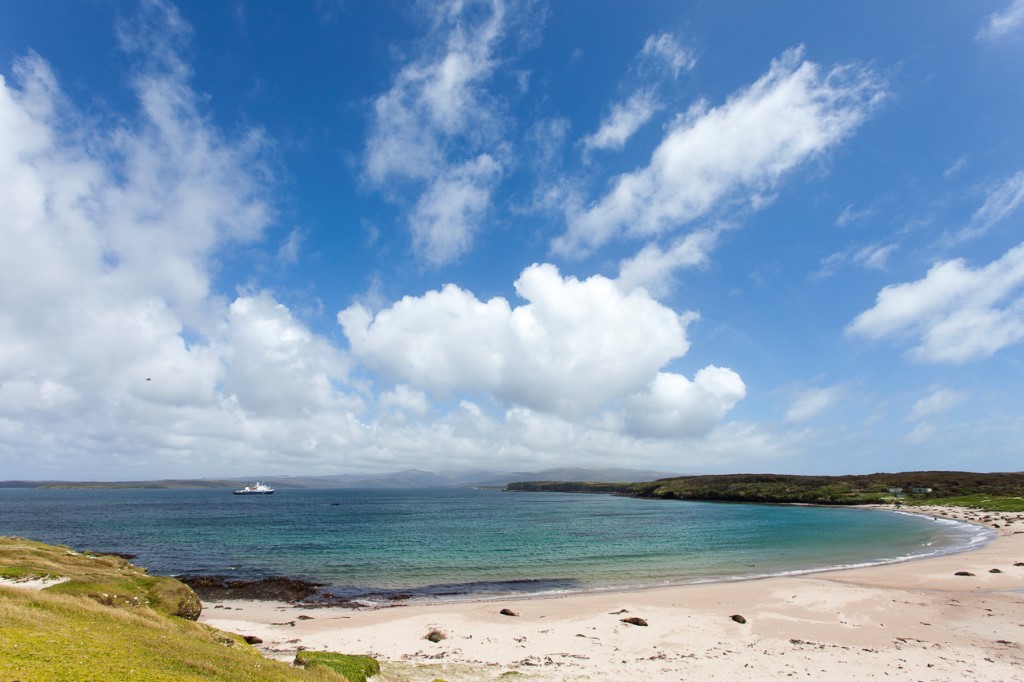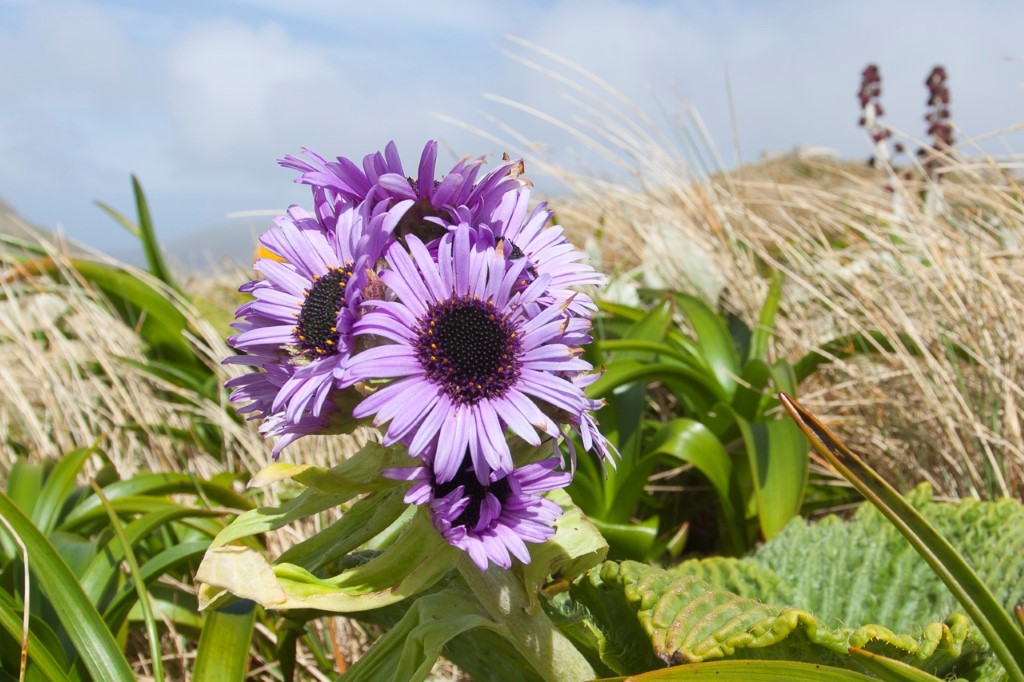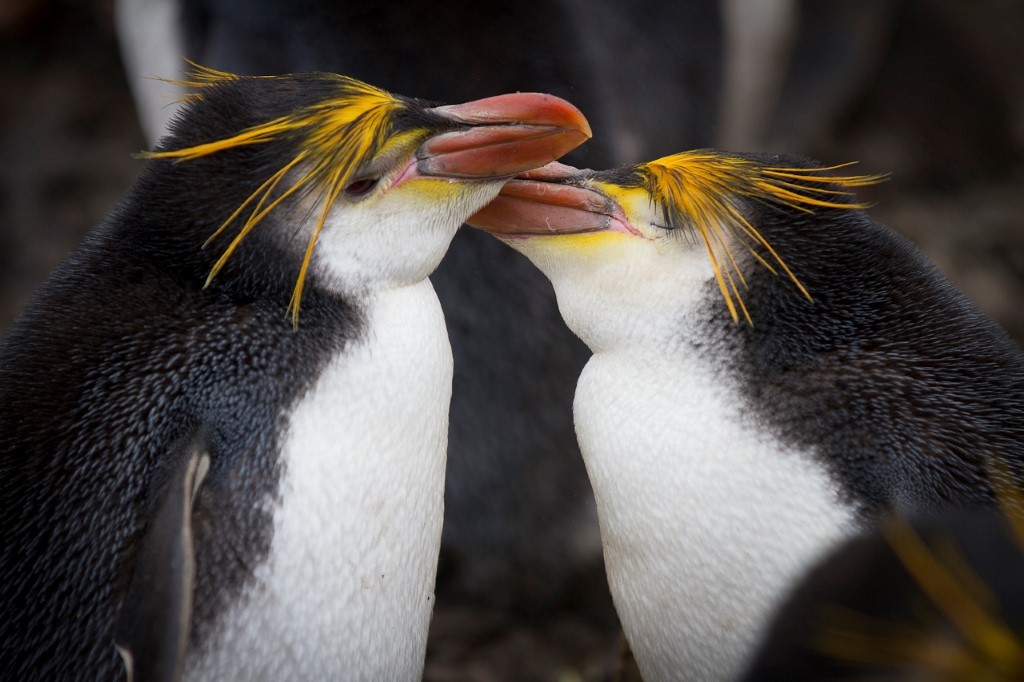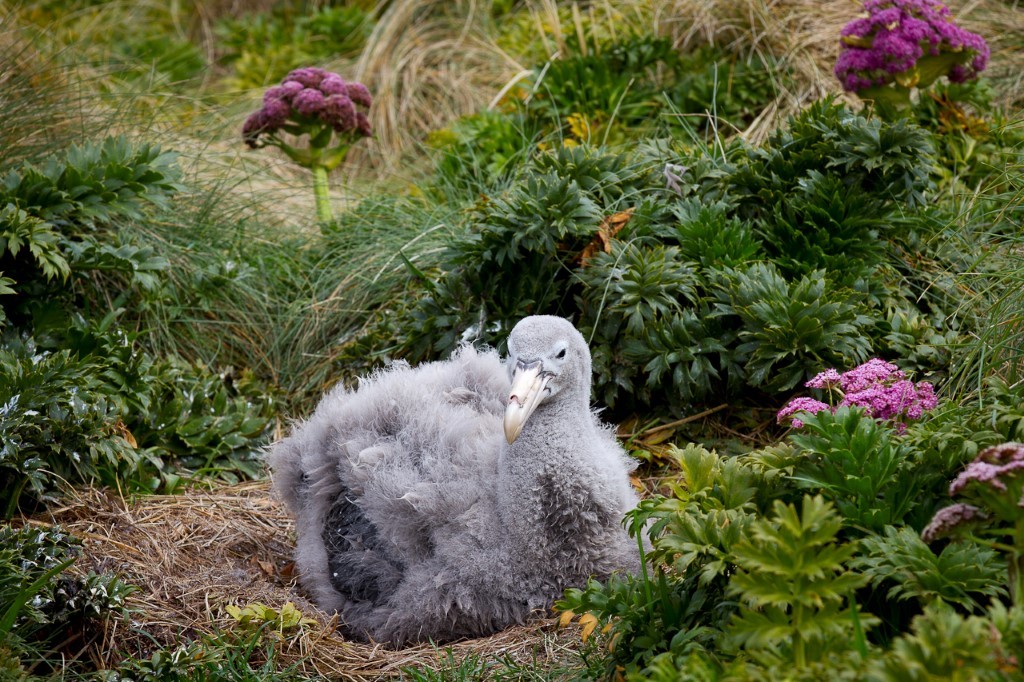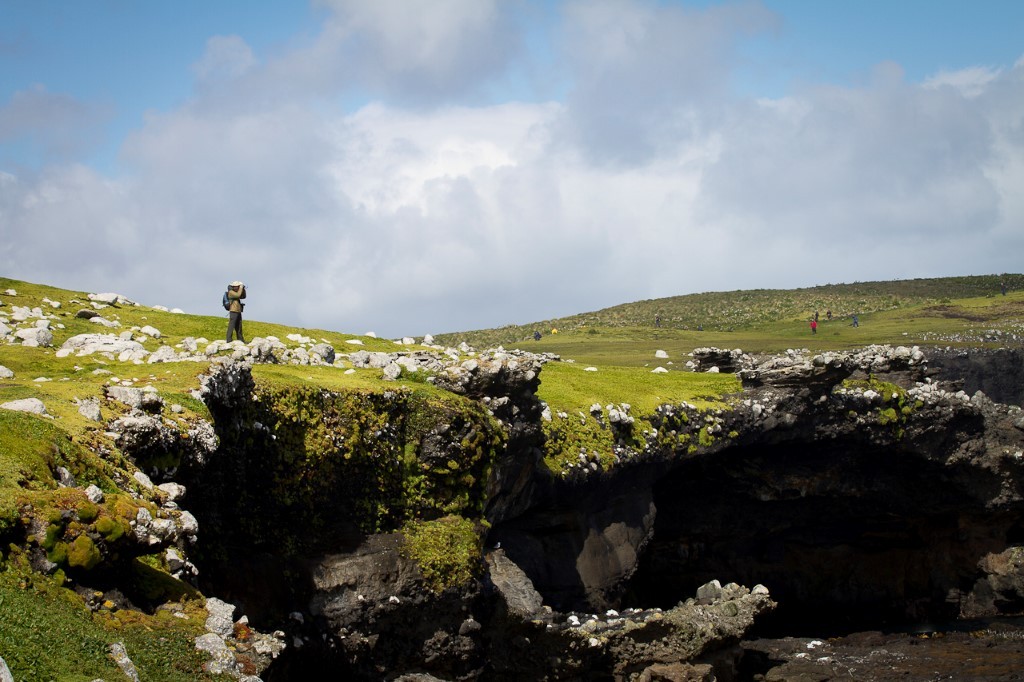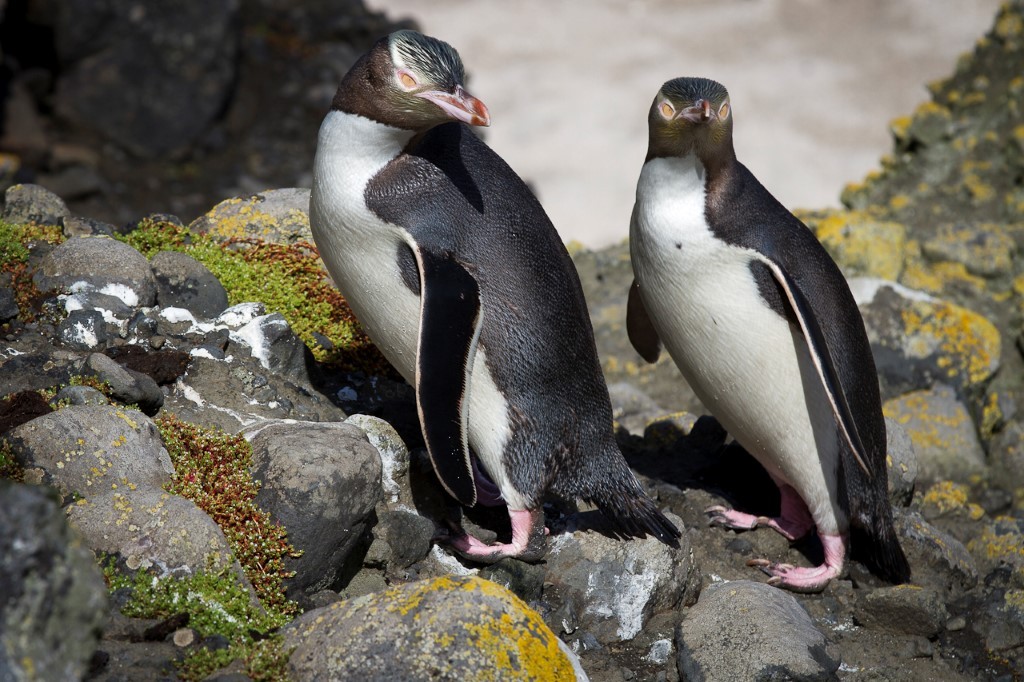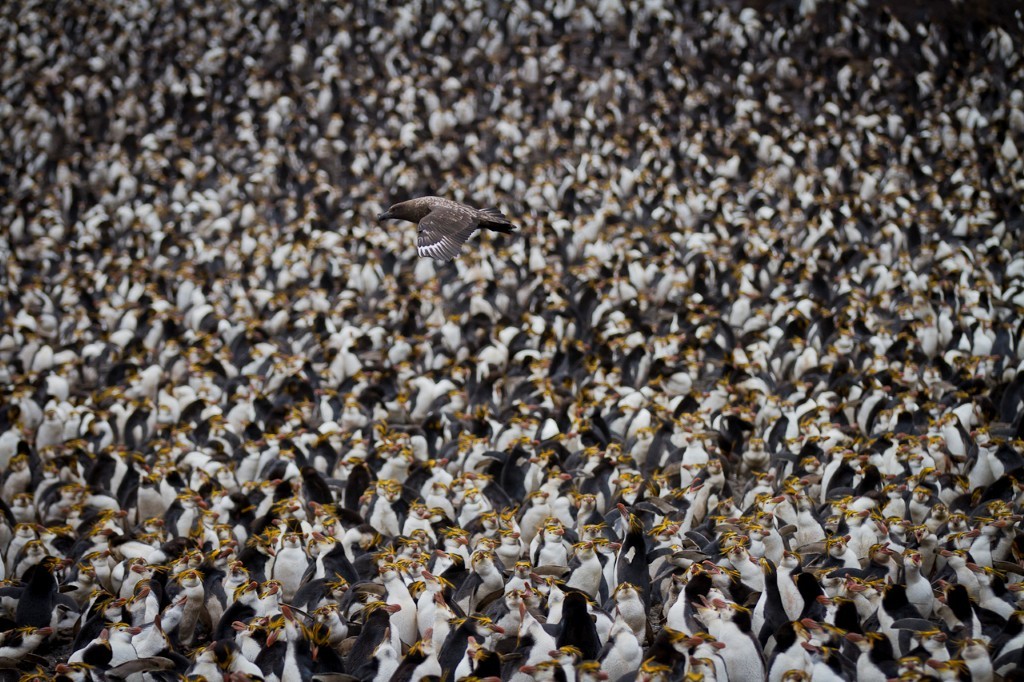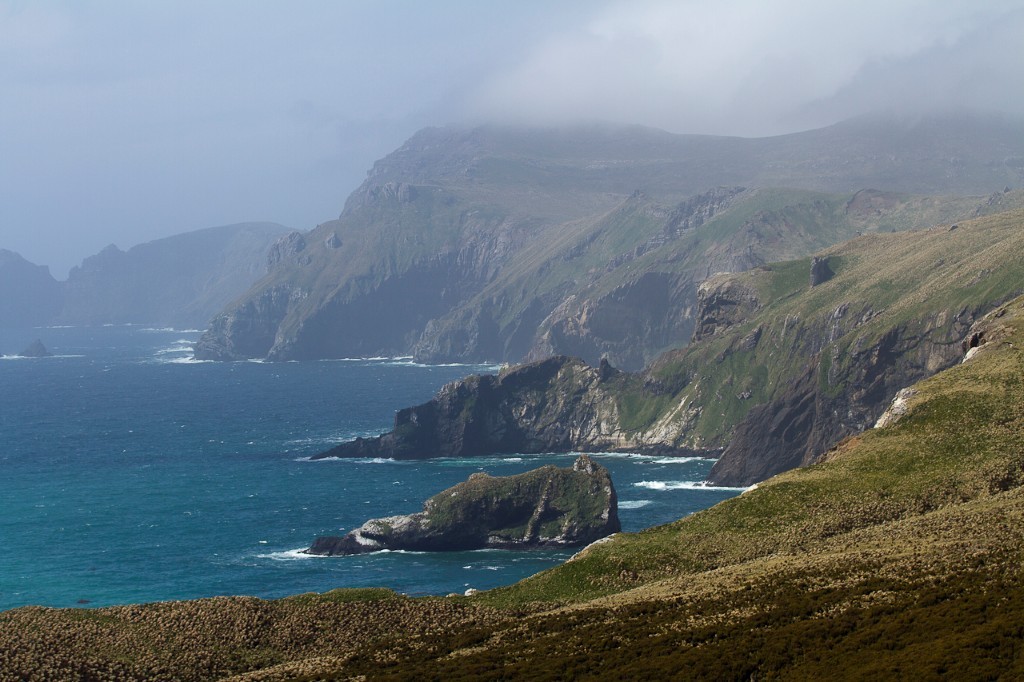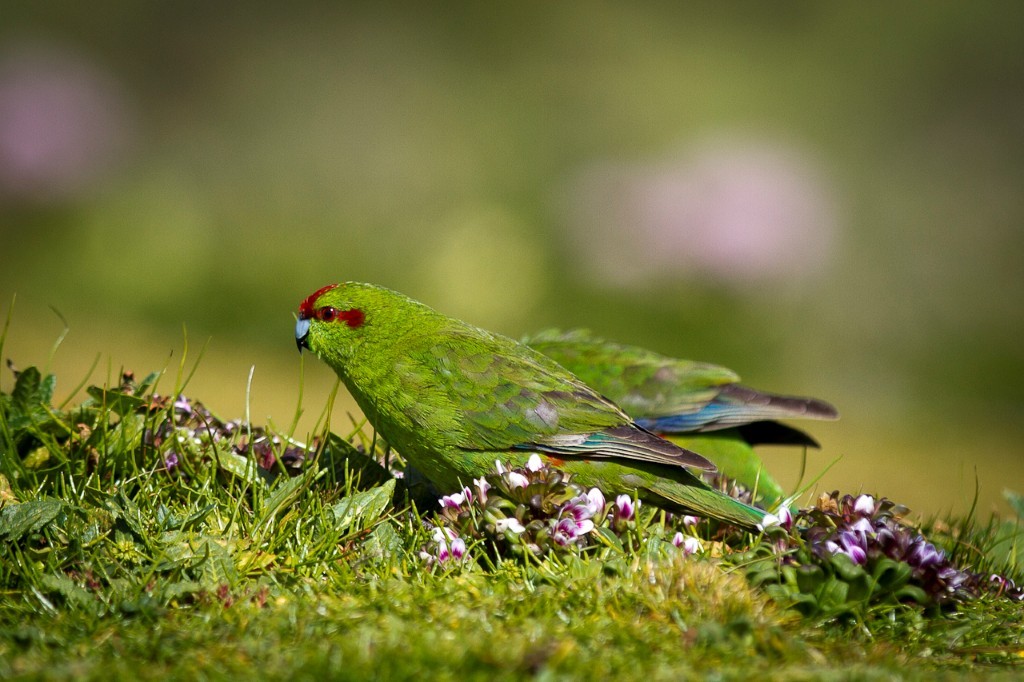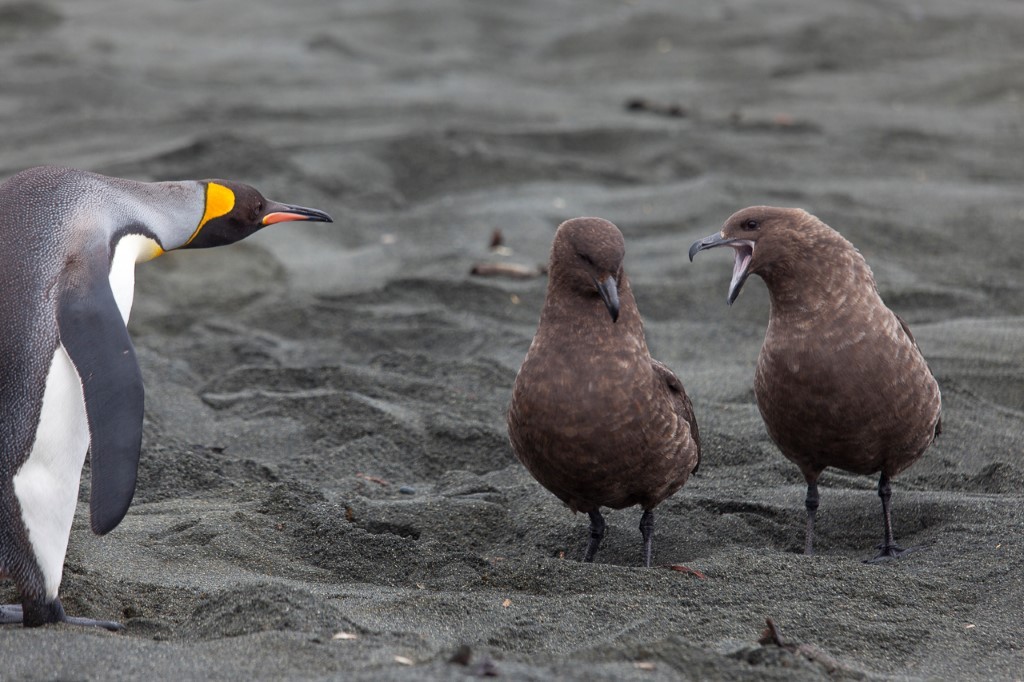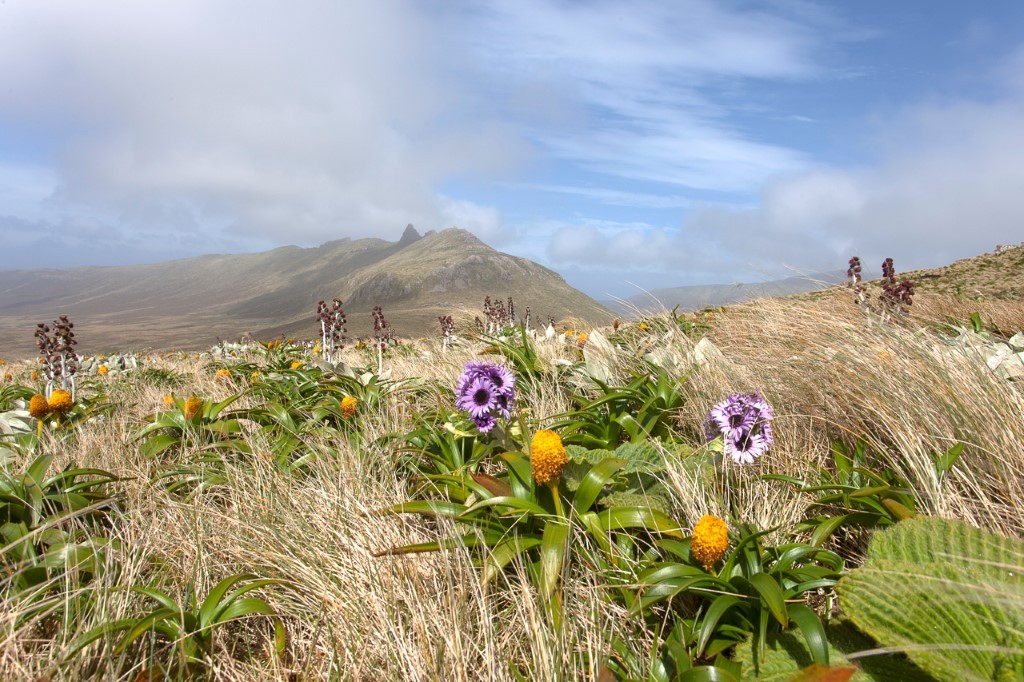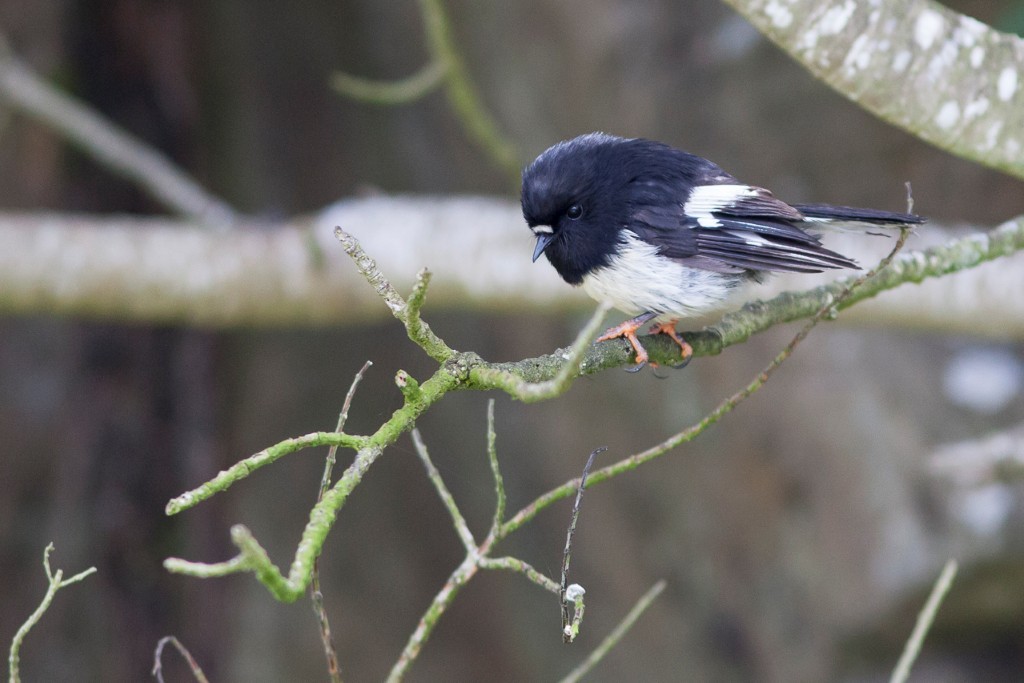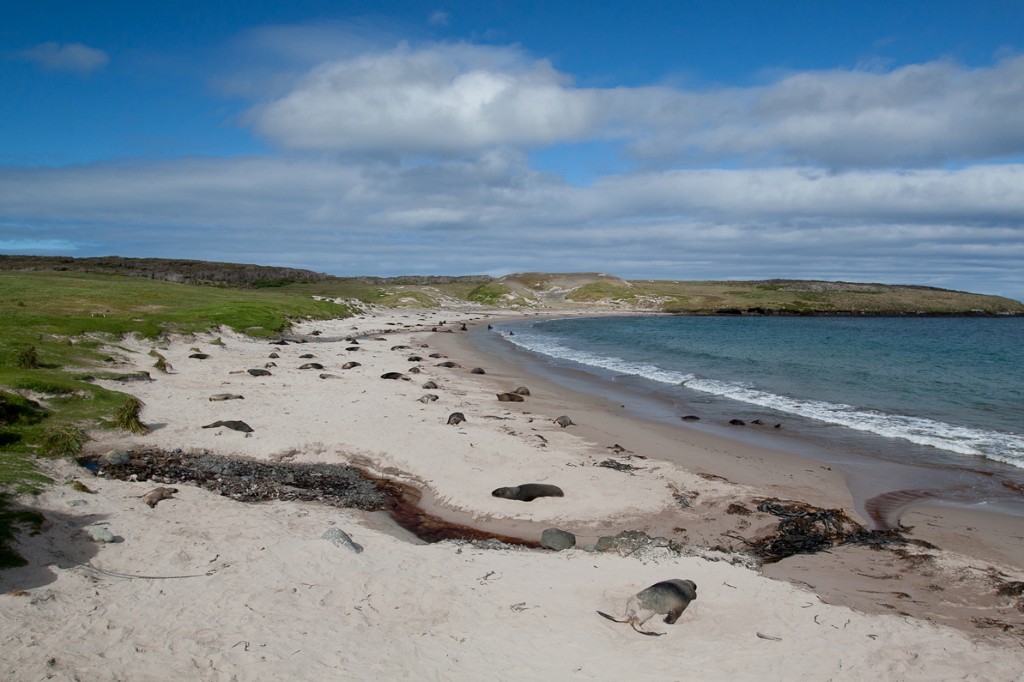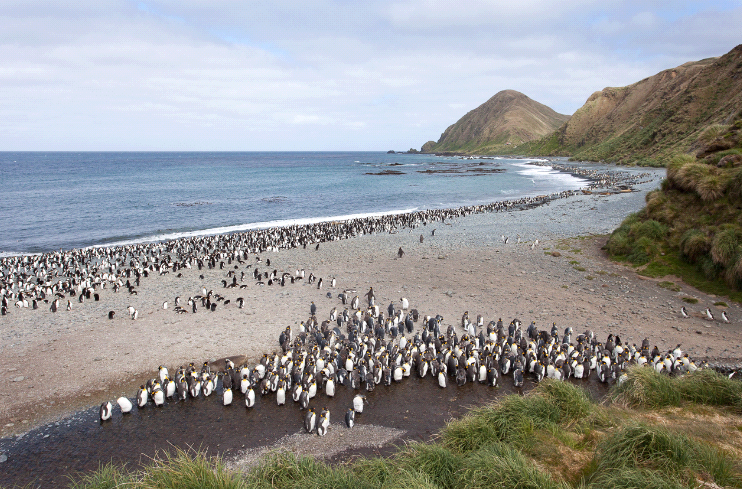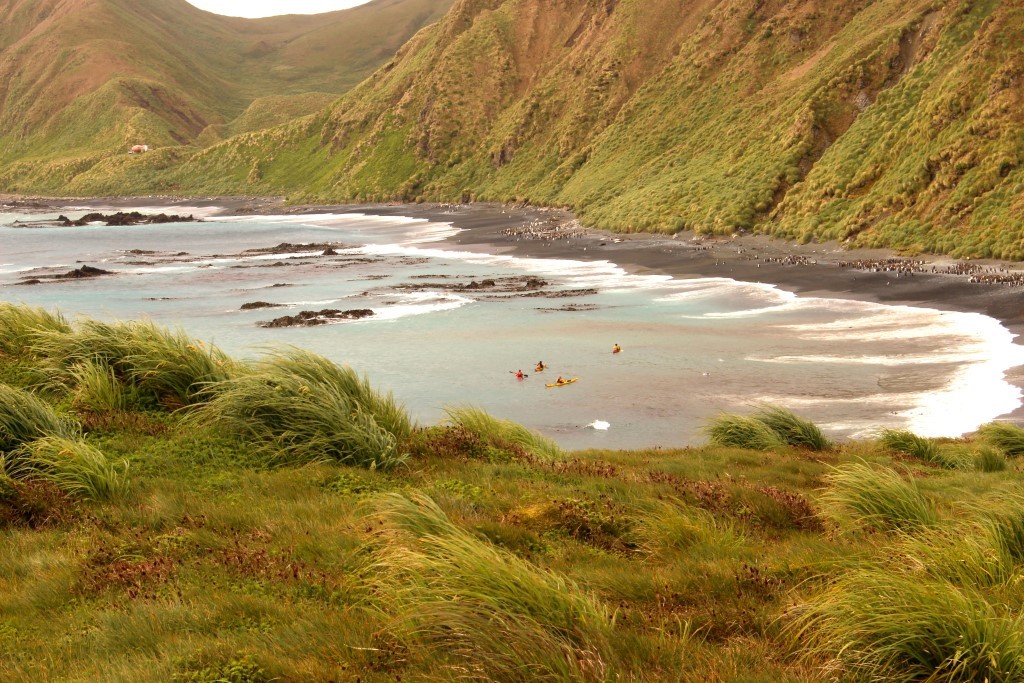
Galapagos of the Southern Ocean | Heritage Adventurer
Discount valid on the 22 Nov 2026 & 17 Dec 2026 departures only
Save up to 20% off on Heritage Suites & Up to 15% off on Worsley Suites only
Available until 9 Jan 2026 unless withdrawn prior
See additional T&Cs below*
12 Days
From USD 10,490
Trip Code: NZHEGSO
DIFFICULTY RATING: 2 (light adventure)
Start: Queenstown, New Zealand
Finish: Queenstown, New Zealand
SHIP: Heritage Adventurer
![Destination Destination]() Destination
Destination
Subantarctic Islands of New Zealand
![Destination Destination]() Departure Date
Departure Date
26/11/2025, 22/11/2026, 17/12/2026
![Meals Meals]() Meals
Meals
Dinner & Breakfast at Hotel; All Meals Onboard the Ship
![Transport Transport]() Transport
Transport
Group transfers from Queenstown Hotel to ship for Embarkation & from Bluff port to Invercargill or Queenstown airport after Disembarkation
![Transport Transport]() Accommodation
Accommodation
Cabin on board ship & Hotel
Enquire Now


![Included Sightseeing Included Sightseeing]() Included Sightseeing
Included Sightseeing
Daily Excursions, Zodiac Cruising, Onboard Expert Lectures & Briefings by the Experienced Expedition Team
NOTE: Itinerary is subject to change depending on government regulations, weather & ice conditions
OVERVIEW
Undertake one of the most inspirational and unforgettable journeys to the unique sites of the Southern Ocean. The Subantarctic Islands are dubbed the 'Galapagos of the Southern Ocean' due to their incredibly rich biodiversity. This expedition experience will have you encountering vast colonies of penguins, fur and elephant seals. You will also spot unique seabirds including albatross, petrels, shearwaters and prions. Discover four of the Subantarctic Islands on this incredible adventure as you immerse yourself in some of the most remote and isolated islands of the world, each unique and filled with incredible vistas and varied ecosystems. From rocky shores to open plains of incredible 'megaherbs'. This is a truly unforgettable and unique expedition experience close to home.
* Optional Sea Kayaking now on some departures. Please enquire for price and availability at time of booking.
ITINERARY

Our Galapagos of the Southern Ocean adventure started with a relaxing night at our respective accommodations in Queenstown. This was a chance to connect with fellow travellers, meet some of our Expedition Team and build excitement for the voyage ahead. After a delicious dinner, we settled in for the night.

Today we enjoy breakfast in the hotel restaurant and have the morning free to explore Queenstown before returning to the hotel for lunch and departing for the Port of Bluff to embark your ship. You will have time to settle into your cabin and familarise yourself with the ship; we will also take the opportunity to conduct a number of safety briefings. You are invited to join the expedition team in the Observation Lounge and up on the Observation Deck as we set our course to The Snares and our adventure begins.

The closest Subantarctic Islands to New Zealand, they were appropriately called The Snares as they were once considered a hazard for sailing ships. Comprising of two main islands and a group of five islands called the Western Chain; they are uninhabited and enjoy the highest protection as Nature Reserves. It is claimed by some that these islands are home to more nesting seabirds than all of the British Isles together. We plan to arrive in the morning, and as landings are not permitted, we will Zodiac cruise along the sheltered eastern side of the main island if the weather and sea conditions are suitable. In the sheltered bays, we should see the endemic Snares Crested Penguin, Snares Island Tomtit and Fernbirds. There are hundreds of thousands of Sooty Shearwaters nesting on The Snares; the actual number is much debated. Buller’s Albatross breed here from early January onwards. There will be opportunities to view the forests of large tree daisy Olearia lyallii which forms a canopy over much of the island group.

The Auckland Islands group was formed by two volcanoes which erupted some 10-25 million years ago. They have subsequently been eroded and dissected by glaciation creating the archipelago as we know it today. Enderby Island is one of the most beautiful islands in this group and is named after the same distinguished shipping family as one of our own vessels. This northern most island in the archipelago is an outstanding wildlife and birding location and is relatively easy to land on and walk around. The island was cleared of all introduced animals (pests) in 1994 and both birds and the vegetation, especially the herbaceous plants, are recovering both in numbers and diversity. Our plan is to land at Sandy Bay, one of three breeding areas in the Auckland Islands for the Hooker’s or New Zealand Sea Lion, a rare member of the seal family. Beachmaster bulls gather on the beach, defending their harems from younger (ambitious) males, to mate with the cows shortly after they have given birth to a single pup. Hooker’s or New Zealand Sea Lion numbers are in a slow decline, for reasons which are not obvious but most probably connected with a nearby squid fishery. During our day ashore there will be several options, some longer walks, some shorter walks and time to spend just sitting and enjoying the wildlife. The walking is relatively easy. A boardwalk traverses the island to the dramatic western cliffs, from there we follow the coast and circumnavigate the island. Birds that we are likely to encounter include the following species: Southern Royal Albatross, Northern Giant Petrel, Auckland Island Shag, Auckland Island Flightless Teal, Auckland Island Banded Dotterel, Auckland Island Tomtit, Bellbird, Pipit, Red-crowned Parakeet, Yellow-eyed Penguin and Light-mantled Sooty Albatross. There is also a very good chance of seeing the Subantarctic Snipe. Other more common species we will see include the Goldfinch, Song Thrush, Blackbird, European Starling, Red-billed Gull and Redpoll. On Derry Castle Reef we will look for migratory waders which could include Bar-tailed Godwit, Turnstone and possibly vagrants.

In the south of the archipelago there is a very large sheltered harbour rich in human history including shipwrecks, treasure hunters, Coastwatchers and, of course, scientific parties. We plan to arrive mid-morning entering the harbour through the eastern entrance which is guarded on both sides by dramatic cliffs and rugged, tussock-covered hills. Our activities here today are weather dependent. We have a number of options. If the weather is fine there will be an opportunity for the more energetic expeditioners to climb to the South West Cape and visit the Shy Mollymawk colony. This climb provides magnificent views in all directions, especially over the western entrance to Carnley Harbour, Adams Island and Western Harbour. For those not making the climb there will be an opportunity to Zodiac cruise along the coast of Adams Island, Western Harbour and Victoria Passage. Other options include the Tagua Bay Coastwatcher’s hut and lookout which was occupied during the Second World War. We could visit Epigwatt and the remains of the ‘Grafton’ which was wrecked here in 1864. All five men aboard survived and lived here for 18 months before sailing their modified dinghy to New Zealand to get help. Two of the survivors wrote books about their ordeal, their first-hand accounts tell us a lot about their time here. Later this afternoon we depart for Macquarie Island.

As we make our way through an area known as the Furious Fifties in the tumultuous Southern Ocean, we will learn more about the flora and fauna as we prepare for our arrival at Macquarie Island. En route there are great birding opportunities which may include the Wandering Albatross, Royal Albatross, Black-browed Albatross, Light-mantled Sooty Albatross, Salvin’s Albatross, Grey-headed Albatross, Northern and Southern Giant Petrel, Sooty Shearwater and Little Shearwater. We will endeavour to spot the Fairy Prion, Fulmar Prion and Antarctic Prion – never an easy task – but we should get some great views. Other species to be on the lookout for include the Soft-plumaged Petrel, Mottled Petrel, White-headed Petrel, Grey-faced Petrel, White-chinned Petrel, Grey-backed Storm-Petrel, Wilson’s Storm-Petrel and the Black-bellied Storm-Petrel.

Described by one Australian explorer as “One of the wonder spots of the world” this is the only place in the world where the beautiful Royal Penguin breeds. Three other species of penguins, the King, Gentoo and Rockhopper also breed here. You will never forget your first experience of a noisy ‘penguin city’, where the dapper inhabitants show no fear of their strange visitors and where you will be immersed in a tumult of chattering, feeding chicks; territorial disputes; petty pilfering and courtship displays. This all happens amongst the hundreds of Southern Elephant Seals lolling on the beaches and dunes. On arrival we meet with scientists and Park Rangers based here who will accompany us on all our landings.

There will be briefings and lectures on Campbell Island in preparation for our visit there and opportunities for pelagic birding and/or simply relaxing.

We have a full day to explore Campbell Island, New Zealand’s southernmost Subantarctic territory. Its history is as rich and varied as the other islands we visit. Discovered in 1810, it was soon occupied by sealers who introduced rats and cats. Farming followed from 1895 to 1934 when it was abandoned. Coastwatchers were stationed on the island during the war and at the end of the war the station was taken over by the New Zealand Metrological service. They maintained a manned weather/ research station there until 1995. In the early 1970s the removal of farm animals commenced and all were eventually removed by 1990. The vegetation recovered quickly and the cats died out naturally. In a very ambitious (and never before attempted on such a large scale) eradication programme the New Zealand Department of Conservation successfully removed the rats. With the island declared predator free, the way was clear to reintroduce the endangered Campbell Island Flightless Teal, which had been rediscovered on an offshore island in 1975. Snipe, which were formerly unknown from the island but were discovered on another offshore island, recolonised the islands themselves. The vegetation which the great English botanist Sir Joseph Hooker described in 1841 as having a “Flora display second to none outside the tropics” is flourishing and is nothing short of spectacular. We will offer a number of options which will enable you to explore the island including an extended walk to Northwest Bay. There will also be an easier walk to the Col Lyall Saddle. All of these options will allow you the opportunity and time to enjoy the Southern Royal Albatross which nest here in large numbers. We also visit areas of the island which contain outstanding examples of the megaherbs for which the island is renowned.

At sea en route to the Port of Bluff, take the opportunity to relax and reflect on an amazing experience. We will recap the highlights of our expedition and enjoy a farewell dinner tonight as we complete the last few miles of our journey.

Early this morning we will arrive in the Port of Bluff. After a final breakfast we bid farewell to our fellow voyagers and take a complimentary coach transfer to either Invercargill or Queenstown Airports. In case of unexpected delays due to weather and/or port operations we ask you not to book any onward travel until after midday from Invercargill and after 3pm from Queenstown. Note: During our voyage, circumstances may make it necessary or desirable to deviate from the proposed itinerary. This can include poor weather and opportunities for making unplanned excursions. Your Expedition Leader will keep you fully informed. Landings at the Subantarctic Islands of New Zealand are by permit only as administered by the Government of New Zealand. No landings are permitted at The Snares.
WHY CHOOSE THIS CRUISE?
-
This expedition experience is incredibly rich and insightful allowing you to discover a unique pocket of islands to which few travellers ever visit.
-
The Subantarctic islands are perfect for travellers from Australia and New Zealand, offering a serene and isolated small ship expedition experience close to home.
-
Encounter an incredibly rich array of wildlife from large seabirds including petrels, prions, albatross and shearwaters to large sea mammals including sea lions, fur and elephant seals.

Heritage Adventurer
The Heritage Adventurer is a true expedition vessel of exceptional quality and design. Built in 1991, this 140-guest expedition vessel was purpose built for polar expeditions. Combining a high passenger ship ice class rating (1A Super) and a rich expedition history including most of the northern and southern Arctic and Antarctic, the Adventurer superimposes the notion of a truly tried and tested expedition vessel. Each voyage on board the Adventurer is entirely unique. Your expedition crew will meticulously plan and design each exploration in true expedition style. A fleet of 14 zodiacs ensures that every guest can maximise their expedition experience once on board. Guests will enjoy a personalised experience on one of the industry’s most iconic polar vessels. Well-appointed ship ideally suited to expeditions Complete with stylish accommodations, two restaurants and a bar and lounge area guests will find a number of avenues for relaxation. Furthermore, the ship's Open Bridge policy means that guests will be able to first-hand experience the expedition experience from the eyes and shared experiences of the captain and crew. Exploration is the top focus Having held records for the most northern and southern Arctic and Antarctic navigations, and for traversing both the Northwest and Northeast Passages, the purpose-built Heritage Adventurer was built in Finland for the purpose of Antarctic and Arctic expeditions. Inviting onboard amenities A host of guest lectures from botanists, naturalists, historians and experts will be shown in the ships Presentation Theatre or guests may simply choose to unwind in the library, heated saltwater pool, sauna room, gym or enclosed hot tub. Comfortable rooms Spacious cabins and suites, with large picture windows or portholes, are all outer facing. This means all guests can enjoy Antarctic views as they travel, with room configurations flexible to suit triples, twins, singles, or couples.  WHY WE LOVE THE HERITAGE ADVENTURER
WHY WE LOVE THE HERITAGE ADVENTURER
FEATURES OF THE HERITAGE ADVENTURER 
Ice Class:
Length: 124m
Breadth: 18mMax
Draft: Cruising
Speed: 15 Knots
Electricity: Passenger
Capacity:140
View Ship Details
Included ACTIVITIES
These are included in your cruise fare. Activities vary by itinerary and destination and are subject to regulations, weather conditions and other factors.
OPTIONAL ADVENTURES ADD ONS
These can be booked in advance at an extra cost. Activities vary by itinerary and destination.
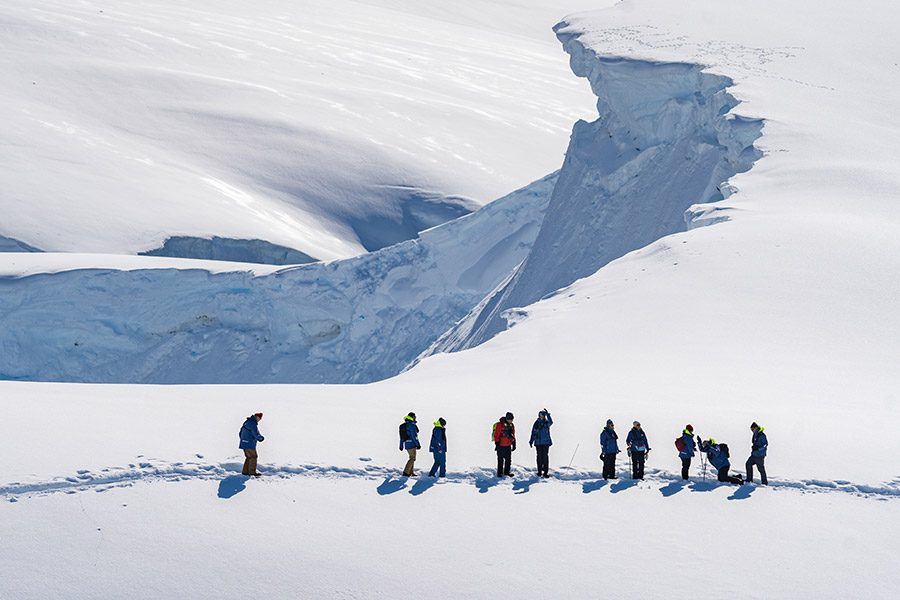
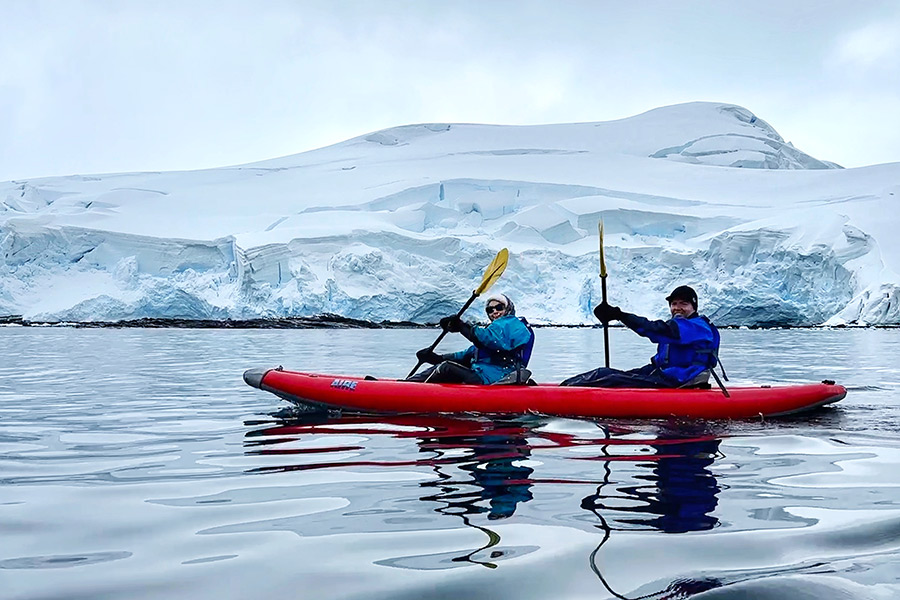
Pricing per person & date
Pricing & Availability last updated 5 November 2025
| Galapagos of the Southern Ocean | Heritage Adventurer from USD 10,490 | ||
| Departing | Ending | Duration |
|---|---|---|
| 26 Nov 2025 | 07 Dec 2025 | 12 |
| 22 Nov 2026 | 03 Dec 2026 | 12 |
| 17 Dec 2026 | 28 Dec 2026 | 12 |
EXTEND YOUR TRIP
From USD 33,075
Was USD 3,750
NOW From USD 3,000
Important Information
* Save Up to 20% Off
Available on select 26/27 Antarctic Season departures only
Offer valid in Select cabin categories on a Twin share basis
Save up to 20% off on Heritage Suites & Up to 15% off on Worsley Suites only
Excludes landing fees and optional extras
Cannot be used in conjunction with any other offers except past passenger discount.
Promotion valid on new bookings until 9 January 2026 and subject to availability.
Offers can be withdrawn or varied at any time.
Please Contact Us for the latest availability, pricing and details of your preferred voyage. Chimu Adventures are Antarctica & Subantarctic Island experts and we will endeavour to find you the perfect expedition cruise to ensure you have an unforgettable adventure!
NOTE: Pricing is subject to change, currency fluctuation and availability at the time of booking and may be varied without notice by us or any of the operators and partners we work with. It is only confirmed and guaranteed at the time of making a booking, agreeing to our terms and conditions and paying a deposit.
Prices are based on per person, twin share* (unless otherwise stated for triple/quad cabins)
Prices are correct at time of publishing but are subject to change at any time.
Itinerary is subject to change depending on government regulations, weather and ice conditions
* Landings at the Subantarctic Islands of New Zealand are by permit only as administered by the Government of New Zealand. No landings are permitted at The Snares.
INCLUSIONS
Pre/post cruise transfers to/from the ship (does not include airport arrival transfer to hotel)*
One night hotel accommodation in Queenstown in a twin share room (incl. dinner/breakfast)
Cabin Accommodation on board vessel
All meals whilst on board; house beer, wine and soft drinks with lunch and dinner
Landing Fees (valued at 500USD per person)
Guiding and lectures by experienced expedition crew
Expeditions by zodiac according to itineraryEXCLUSIONS
International flights
Airport transfers, taxes and excess baggage charges unless specified
Meals other than those specified in the pre-departure information
Pre or post cruise travel expenses
Any optional activities not mentioned in itinerary
Visa and reciprocity fees (if applicable)
Travel insurance
All items of a personal nature
Laundry and drinks
Customary gratuities for staff and expedition crew
- 2 (light adventure)
Available on request. Subject to availability. Please contact us for more information.
Departure date, fuel surcharges, cabin category, currency fluctuations, seasonality and availability.

